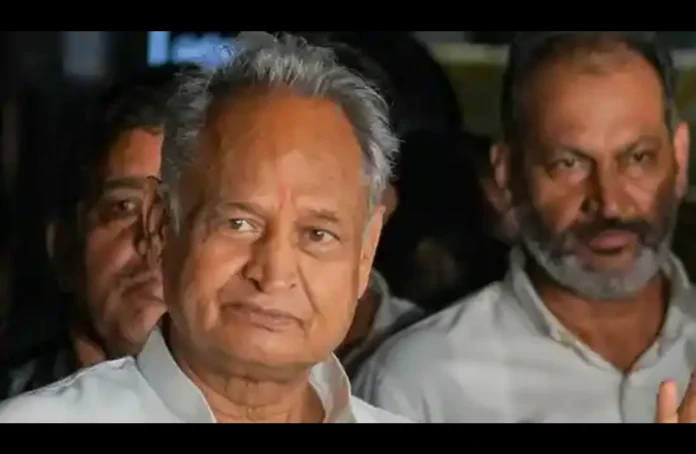In a surprising turn of events, Rajasthan Chief Minister Ashok Gehlot recently displayed an unusual act of frustration during a public event, captivating the attention of attendees and sparking widespread discussion. The incident occurred in Jaipur, the capital city of Rajasthan, where the CM was addressing a gathering of local residents and dignitaries. During his speech, which focused on various developmental initiatives and government policies, Chief Minister Gehlot seemed visibly agitated by an unidentified interruption. In a moment of exasperation, he unexpectedly grabbed the microphone and forcefully hurled it onto the floor, stunning the audience and leaving them in a state of astonishment. The incident, captured on video by several attendees, quickly made its way onto social media platforms, generating a storm of online debates and raising questions about the CM’s temperament and composure in public settings.
Netizens expressed a range of opinions, with some condemning the act as unbecoming of a leader, while others sympathized with Gehlot’s potential frustrations and lauded his passion for addressing the concerns of the people. Soon after the incident, the Chief Minister’s office issued a statement, acknowledging the occurrence and clarifying the circumstances surrounding it. According to the statement, Gehlot had been facing repeated disruptions from a small group of unruly attendees who were attempting to hijack the event for their own agenda. Despite his efforts to maintain order and continue his speech, the persistent interruptions seemed to have pushed him to his limits, resulting in the impulsive act. Political opponents were quick to criticize Gehlot’s behavior, using the incident to question his leadership skills and ability to handle pressure.
They argued that such actions were unbecoming of a seasoned politician and displayed a lack of control in the face of adversity. Supporters of the Chief Minister, on the other hand, defended him, citing his long-standing commitment to public service and the potential frustration caused by disruptive elements. The incident also brought attention to the broader issue of maintaining decorum and civility during public events, prompting discussions on the importance of respectful engagement and constructive dialogue. Many experts called for increased security measures and better crowd management protocols to ensure the smooth functioning of such gatherings, while also safeguarding the dignity of public figures. As the incident continues to make headlines, it serves as a reminder of the challenges faced by politicians in maintaining composure and addressing public concerns effectively. It also highlights the intense scrutiny under which they operate, with even minor displays of frustration capturing public attention and fueling debates.


